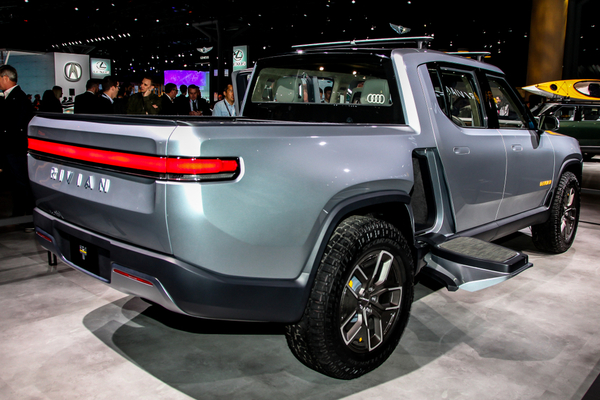Rivian, the electric vehicle startup based in Michigan and California, revealed this week the pricing for its forthcoming R1T pickup truck and R1S SUV. Both vehicles, which were first unveiled in late 2018, are expected to reach customers by summer 2021. Special “launch” editions of both vehicles will come first, starting with $75,000 for the R1T truck and $77,500 for the R1S SUV. Both will come with 300 miles of range. A 400-mile battery pack for the R1T will be available in January 2022, Rivian says.
Initially, the company only planned for a 300-mile R1S, but now intends to release details for a longer-range version of the SUV with both five- and seven-passenger seating after it goes into production. Rivian will also announce a 250-mile range, lower priced R1T and R1S at that time. The company recently showed off an electric delivery van that it is developing in partnership with Amazon. These prices represent a slight increase over what the company originally announced back in 2018, when it said the R1T would have a base price of $69,000 and the R1S would start at $72,500. The company’s vehicles will also be eligible for a federal tax credit of $7,500 each.
Rivian’s vehicles will eventually go head-to-head against some potentially heavy hitters like Tesla, General Motors, and Ford, as well as new players like Lordstown and Bollinger. There are dozens of electric trucks and SUVs planned for the next few years, thanks to skyrocketing sales in the US. Automakers tend to make more profit on bigger vehicles than sedans, though battery costs tend to drive up the prices of electric vehicles compared to their gas-powered equivalents.
Rivian, which has picked up some huge investments from a host of major players including Amazon, also unveiled plans for a “hands-free” advanced driver assist system that it’s calling “Rivian Driver+.” The system, which will only work on select highways at first, will allow the vehicle to “automatically steer, adjust speed, and change lanes on your command,” Rivian says. Over-the-air software updates will help improve its area of coverage and capabilities. But it isn’t a self-driving system, and “requires your full attention on the road at all times and you should not use a hand-held device behind the wheel,” the company warns.
—
Photo Credit: Miro Vrlik Photography / Shutterstock.com
